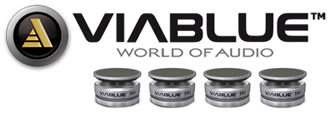New Customer?
Create your accountNo products
Prices are tax included
The different Bluetooth codecs (AAC, SBC, AptX, LDAC)
Learn how Bluetooth and its different codecs work

First of all, what is Bluetooth? It's a wireless transmission protocol that enables two devices - often a transmitter and a receiver - to transmit data to each other. This telecommunications standard enables bidirectional data exchange over short distances. Bluetooth uses radio waves in the 2.4GHz bandwidth. First introduced in the 90s, it has become the standard for all electronic devices wishing to enable their users to interconnect without a wired link. Today, it is very much in evidence in the world of audio, and can be found on both top-of-the-range Hi-Fi devices and more affordable ones.
An historical anecdote
According to legend, the name "Bluetooth" refers to the nickname of the Danish Viking king Harald I, known as Harald of the Blue Tooth, which literally translates into English as Harald Bluetooth. The latter is known for having unified the Danish tribes within their kingdom. The name was proposed by Jim Kardash of Intel in 1996. It makes sense when you understand the primary function of Bluetooth, which is to "unify", to connect two devices together. The logo is even inspired by Harald Blåtand's initials in the runic alphabet.

Before going any further, here are a few definitions to help you understand this article:
- Bitrate: this refers to the amount of data processed per unit of time. In audio we speak of Kbps (KiloBits/second) or Mbps (MegaBits/second).
- Latency : indicates the time taken to transfer data over a network. In other words, it's the time it takes for a data packet to travel from its source to its destination.
- Compression : this consists in minimizing the size of data while enabling it to reproduce the same information. However, compression often results in data loss, which can affect rendering quality, particularly in audio.
- Sampling frequency: this represents the number of data samples per unit of time. In audio, the unit of time used is the second, so it is expressed in Hertz.
Bluetooth evolution from 1.0 to 5.0
Bluetooth 1.0 : version 1.0 appeared in 1998, and the first cell phone to integrate it in 1999 was the Ericsson T39. Today, this technology is obviously outdated by today's standards. It did benefit from a few improvements up to version 1.2, but had a number of disadvantages, such as a lack of anonymity.
Bluetooth 2.0 : revealed in 2004, this version improved data transfer speed thanks to EDR technology. Version 2.1 introduced improvements to the device pairing system, particularly in terms of security.
Bluetooth 3.0 : marketed in 2009, it enabled data transfer speeds of up to 24Mbps, but resulted in very high power consumption by the transmitting devices.
Bluetooth 4.0 : this version arrived in 2010, reducing the high energy consumption generated by Bluetooth use. It was initially marketed as Smart and Ready. A variant known as Bluetooth Low Energy (BLE) democratized the use of Bluetooth more widely on the connected device market. This version evolved until 2014 with version 4.2, which helped make the Internet of Things (IoT) possible. Among other things, this version enabled a single device to play several roles.
Bluetooth 5.0 : a small but significant revolution in wireless transmission, it appeared in 2016, opening the way to lossless audio file transmission by quadrupling the transmission rate and doubling the broadcast range. This version has also enabled the world of retail advertising to evolve. Stores and businesses can now send targeted point-of-sale advertising to the phones of customers who own their application. Version 5.1 features a number of improvements over version 5.0, but it's really version 5.2, introduced in 2021 and also known as Bluetooth LE Audio, that has enabled major advances. Version 5.2 now makes it possible to broadcast multiple audio streams, improve efficiency in congested environments and better device localization, as well as synchronizing audio and video streams.
Bluetooth 5.3 : this LE Audio version supports the LC3 codec, enabling simultaneous audio transfer to multiple devices.
Bluetooth 5.4 : the latest update presented by the Bluetooth Special Interest Group (SIG) offers a data rate of 3Mbps, with a possible range of 400 meters in open fields, while integrating Bluetooth Low Energy Audio technology. We'll have to wait for chip manufacturers and other market players to come up with devices that are compliant and compatible with this latest standard.
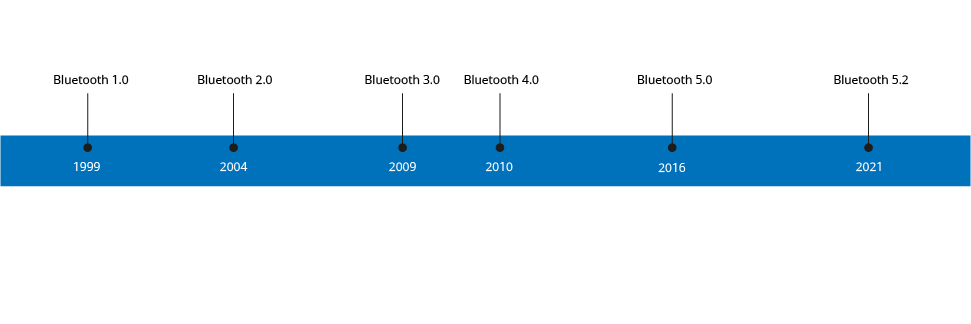
So what exactly is a codec?
The codec principle is simple if you break down its name. Indeed, "co" for coding and "dec" for decoding. It's a system used to encode and decode a digital data stream for transmission or storage. In the Bluetooth audio context, there are a number of different codecs, including SBC, AAC, aptX and LDAC. These enable transmitting devices such as smartphones, tablets, computers and amplifiers, and receiving devices such as DACs, speakers and headphones to communicate with each other.
To transmit data wirelessly via Bluetooth, devices will need to be codec-compatible. The only mandatory codec in the Bluetooth standard is SBC, which means that if your transmitting or receiving device cannot support the same codecs, the default connection will be in SBC. So how do you find your way around the various Bluetooth codecs?

SBC, the mandatory codec for the Bluetooth standard
SBC stands for Low Complexity Subband Codec. It is the only mandatory codec in the Bluetooth standard. Its data rate varies from 127 to 320 Kbps, with a latency of around 300ms depending on conditions and the number of channels. As you can see, these are two aspects that have led to the emergence of new, higher-performance codecs. Indeed, SBC is sufficient to enjoy mp3 files, but won't let you take full advantage of CD-quality files in 44.1kHz, for example.
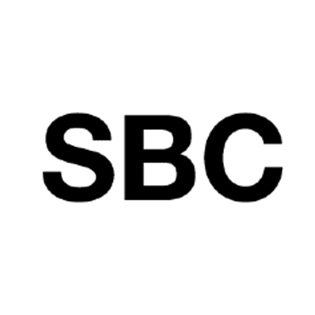

AAC, a special codec
AAC is a codec named after audio files. However, this does not mean that there is no compression when encoding a PCM file in AAC. Its maximum bitrate is 250Kbps for a latency of 150ms, which is half the level of SBC. It has also been widely adopted by manufacturers, and is currently the most widely used optional codec on the market.
aptX, aptX HD, aptX LL, aptX Adaptive
The aptX codec has been around since the 80s, but it was developed in the 2010s thanks to Bluetooth, before evolving into several different versions. Owned by Qualcomm, this codec family is one of the most popular today, as it guarantees high-quality audio rendering. In fact, its bitrate is 384Kbps, with a latency level of 120ms. However, this performance is still too low for some applications, and several versions have been developed:
- AptX LL : refers to Low Latency. This codec has a latency of 40ms, making it highly effective for use with gaming installations, for example.
- Aptx HD : its bitrate can go up to 576kbps. There is therefore less compression loss than with classic aptX, but its latency is 200ms.
- Aptx Adaptative : as its name suggests, this allows devices to adapt with a bitrate ranging from 279 to 420kbps and a latency of 50 to 80ms. This ensures a stable connection in all circumstances, with the low bitrate preferred if your devices are too far away, and the high bitrate if the connection is close, to ensure the best possible sound reproduction.
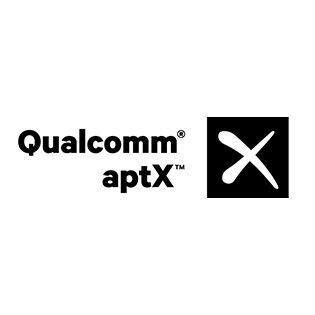
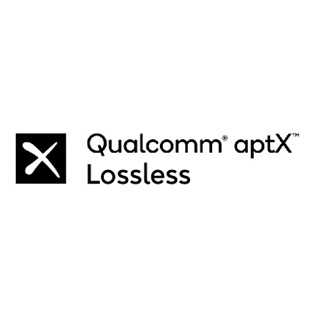
aptX Lossless, CD-quality wireless connection
The latest member of Qualcomm's codec family, it is specifically designed for audiophile use, with a bandwidth of 1mbps sufficient to guarantee the transmission of CD-quality files, i.e. 1411Kpbs with a very low level of compression. However, very few devices on the market today are compatible with this codec.
LDAC
LDAC is a codec developed by the Japanese brand Sony. Like aptX Adaptive, it enables your devices to prioritize connection or sound quality according to their environment. And with a considerable advantage, it can also be manually configured from your source device in three modes: quality priority (max. 990Kbps), normal (max. 660Kbps) or connection priority (max. 320Kbps). This codec is generally available natively on Android devices and benefits from Hi-Res Wireless certification.
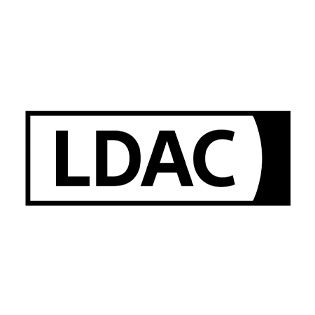

LHDC and LLAC (LHDC LL)
LHDC is a low-latency, high-definition audio codec developed by Savitech. It is based on the A2DP protocol and supports bitrates of 400/560/900Kbps and a sampling rate of up to 24bits 96kHz. It can therefore compete with aptX and LDAC. Like LDAC, it is Hi-Res Wireless certified.
LLAC, also known as LHDC LL, is the low-latency version, with a latency announced by Savitech as 30ms. It supports bitrates of 400/600Kbps and a sampling rate of up to 24bits 48kHz
LC3, the codec of tomorrow?
The Bluetooth LE Audio standard introduced this new codec. The Bluetooth SIG intends to make it the new standard. It will replace SBC in the future. LC3 is expected to deliver better sound quality.
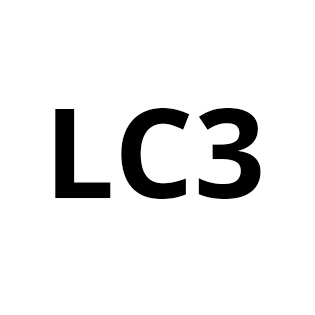
The advantages and inconveniences of Bluetooth in audio
Audiophiles have long rejected Bluetooth connections because of the SBC codec. Although it has a bad reputation, the development of high-definition codecs has made it a reliable, high-quality and stable way of transmitting audio files.
| Advantages | Inconveniences |
|---|---|
| Low energy consumption | Latency too high for combined use of image and sound |
| Standard wireless transmission protocols | Limited reach |
| Ability to compress high-quality audio files | All source device sounds are shared simultaneously |
Summary of Bluetooth codec specifications
| Codecs | Max. bitrate | Latency | Bit depth | Max. sample rates | Compatibility |
|---|---|---|---|---|---|
| SBC | 320Kbps | 300ms | 16Bit | 44.1 / 48kHz | All Bluetooth devices |
| AAC | 264Kbps | 150ms | 16Bit / 24Bit | 44.1kHz | Most Bluetooth devices |
| aptX | 384Kbps | 120ms | 16Bit | 48kHz | All Android devices, and a large proportion of Hi-Fi devices |
| aptX LL | 384Kbps | 40ms | 16Bit | 44.1 / 48kHz | A few devices |
| aptX HD | 576Kbps | 200ms | 16Bit / 24Bit | 48kHz | A few devices |
| aptX Adaptative | 279Kbps / 420Kbps | 80ms | 16Bit / 24Bit | 48kHz | A few devices |
| aptX Lossless | 1.1Mbps/1.2Mbps | 80ms | 16Bit | 44.1kHz | Limited number of devices |
| LDAC | 320Kbps / 660Kbps / 990Kbps | 200ms | 16Bit / 24Bit | 96kHz | Limited number of devices |
| LHDC | 400Kbps / 560Kbps / 900Kbps | NC | 16Bit / 24Bit | 96kHz | Limited number of devices |
| LHDC LL / LLAC | 400Kbps / 600Kbp | 30ms | 16Bit / 24Bit | 48kHz | Limited number of devices |
| LC3 | 160Kbps / 392Kbps | 10ms | 16Bit / 24Bit / 32Bit | 96kHz | Eventually, the majority of Bluetooth devices |
Rechercher dans le blog
Blog categories
Latest Comments
Audiophonics Team
on DIY Tutorial - PiCorePlayer - Installing...Pierre Bommel
on Lecteur réseau Opensource : SolutionsPierre Bommel
on DIY Tutorial - PiCorePlayer - Installing...Audiophonics Team
on Tutorial DIY - Power cable ELECAUDIO CS-331B



















![[GRADE B] AUDIOPHONICS DAW-S250NC Class D Integrated Amplifier NCore NC252MP DAC ES9038Q2M WiFi Bluetooth 2x250W 4 Ohm](https://www.audiophonics.fr/61971-thumb_default/audiophonics-daw-s250nc-class-d-integrated-amplifier-ncore-nc252mp-dac-es9038q2m-wifi-bluetooth-2x250w-4-ohm-32bit-768khz-dsd.jpg)










